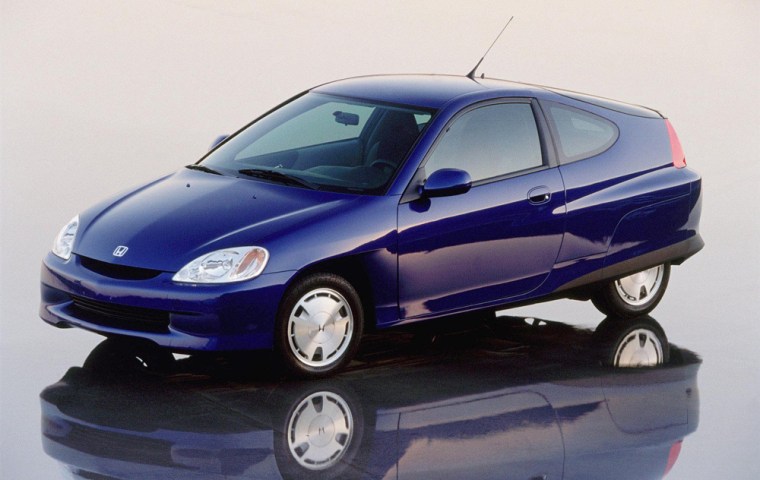Wayne Gerdes knows how to wring a gas tank dry.
He can squeeze 84 miles per gallon from your standard-issue Ford Ranger pick-up. He once averaged more than 100 mpg during the course of an entire summer. And while behind the wheel of a hybrid electric Honda Insight, he coaxed the vehicle into yielding an astonishing 180.1 mpg. Gerdes can do these seemingly impossible things with a car because he is one of a rare breed of drivers known as hypermilers.
These drivers are “completely obsessed” with getting good gas mileage, says Bill Robbins, spokesperson for an annual event called Hybridfest in Madison, Wis., which celebrates hybrid cars and all things related to reducing fuel consumption.
Gerdes, of Wadsworth, Ill., admits to this obsession without hesitation.
He isn’t trying to get merely good gas mileage. Or even great mileage. He’s intent on achieving hypermileage.
He uses specialized driving techniques that can double the normal gas mileage for any car, including non-hybrids. Some techniques are simple, even self-evident. Don’t let your car idle excessively. And don’t waste gas by accelerating up to red lights and stop signs.
Other techniques get a little more technical. For instance, putting the lowest weight oil in your car helps it work more efficiently. “This allows for better kinematic viscosity,” says Gerdes, “which means that it's easier to pump oil through the engine, and the engine moves against itself easier.”
Then, there are the more advanced techniques. Techniques with names like Pulse and Glide, Warp Stealth and Ridge Riding. Gerdes doesn’t like to talk too much about these because, if performed improperly, they can actually be dangerous. If you’re intrigued by the names, not to mention the potentially stratospheric mileage that can result, he recommends seeking out an instructor to show you how advanced hypermiling is done.
As his enthusiasm might suggest, Gerdes isn’t just a hypermiler. He’s the hypermiler.
“He’s the man who coined the term ‘hypermiler’!” says Robbins, the Hybridfest spokesperson.
Gerdes came up with the neologism during that extraordinary 100-plus mpg summer. “I live and die for this stuff,” says Gerdes, who works at a nuclear power plant which, he points out, provides energy without emitting carbon dioxide. He’ll go to almost any length to emit as little CO2 as possible himself and help others to do the same.
Gerdes spreads the hypermiling gospel through instruction. At this summer’s Hybridfest, which drew extreme mileage enthusiasts from around the country, Gerdes and others that share his passion put on a clinic to help attendees practice what the hypermilers preach. In one exercise, Gerdes guided a driver through some basic techniques in a standard Honda Accord, and the driver extracted 51.2 mpg from a car that the EPA rates at 24 mpg city and 34 mpg highway.
The Hybridfest also puts hypermiling skills to use in the name of competition. In the MPG Challenge, drivers try to get the best mileage over a 20-mile course, an event that Robbins describes as “NASCAR in reverse.” Last year, it was on this 20-mile circuit that Gerdes hit the 180.1 mpg mark on his way to victory.
Even though the MPG Challenge is a competition, it’s not a particularly cutthroat one. A lot of the entrants were already friends, having met on Gerdes’ Web site, CleanMPG.com, where they share fuel-saving tips and tricks. Before this year’s contest, Gerdes said, "I’m looking forward to the challenge — the field is thick with great drivers, and they are all my friends, so I'll be happy with whoever wins." This year’s victor was Bill Kinney, who averaged 168 mpg. Gerdes finished second with 146 mpg.
The benefits of hypermiling are fairly apparent. “For the most part, hypermiling encourages non-aggressive driving,” says Geoff Sundstrom, director of AAA Public Affairs. “Driving the speed limit and not speeding up to stop signs are all good things — these are things that we teach new drivers.”
However, when pushed to the extreme, even elementary techniques can become dangerous. Driving too slowly below the speed limit can cause other drivers to become more aggressive and perform unsafe maneuvers, and the technique of using one’s brakes sparingly to conserve energy can lead to drivers rolling through stop signs. “When taken to an extreme, hypermiling can become a very selfish endeavor,” Sundstrom says. “The bottom line is: Saving fuel and conserving energy are important, but so is safety — and preventing crashes.”
Then there’s the questionable method of positioning one’s automobile directly behind a large vehicle (such as an 18-wheeler) to catch its draft and reduce drag, which, Sundstrom says, “is called tailgating!”
But there are ways to reap the benefits of hypermiling while still driving safely. Gerdes suggests ten things that the average driver can do to maximize fuel economy. All of them are applicable to real-world driving conditions, and none of them require the purchase of a hybrid, although surely that will help your numbers. Click on the link to the slideshow to see ten fuel-saving tips from a hypermiler.
